#animal training
Text
Learning anything about marine mammal training will make you re-evaluate so much of your relationship with your own pets. There is so much force involved in the way we handle domestic animals. Most of it isn’t even intentional, it just stems from impatience. I’m guilty of it myself!
But with the exception of certain veterinary settings where the animal’s health is the immediate priority, why is it so important to us that animals do exactly what we want exactly when we want it? Why do we have to invent all these tools and contraptions to force them to behave?
When a whale swam away from a session, that was that. The trainer just waited for them to decide to come back. If they flat out refused to participate in behaviors, they still got their allotment of fish. Nothing bad happened. Not even when 20-30 people were assembled for a procedure, and the whale chose not to enter the medical pool. No big deal. Their choice and comfort were prioritized over human convenience.
It’s almost shocking to return to domestic animal medicine afterwards and watch owners use shock collars and chokers and whips to control their animals. It’s no wonder that positive reinforcement was pioneered by marine mammal trainers. When you literally can’t force an animal to do what you want, it changes your entire perspective.
I want to see that mindset extended to our domestic animals.
#‘oh I can walk my dog off-leash down a crowded street’ why does that matter?????#the horse world is ESPECIALLY bad about this too#edit: the whips is referring to horses I have not seen anyone whip their dog#pets#horses#animal training#dog training#dolphin training#dolphins#belugas#orcas#killer whales#cetaceans#marine mammals#zoos#aquariums#cooperative care#vet med#vetblr
1K notes
·
View notes
Text
Some of y'all are clearly not teaching your cats what an appropriate level of bite force is.
593 notes
·
View notes
Text
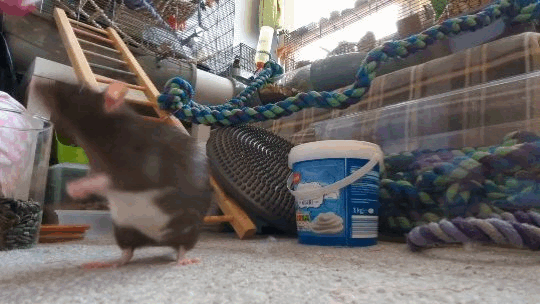


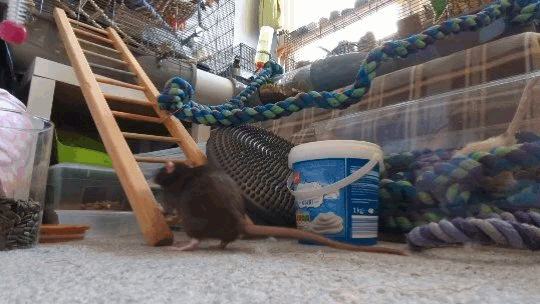
Training the rats to target the lure and to spin. Teacake is the most enthusiastic, Roonie is quickest to learn but it has to be on her terms. Panko is ponderous but is getting the hang of it, she's held back by her lack of sight.
247 notes
·
View notes
Text
I've been interested in animal training since i was a kid. And with Dirac, I have an opportunity to learn from a pro. She came over yesterday and we went over a few exercises for us to practice together.
Helpful for keeping shoots fun for D and giving him tools to tell me "no. im bored/anxious, im done". And getting guidance on how to best socialize him so noises and strangers are no biggie.
Here he is learning to come towards a beeping sound. It took him no time at all for him learn that beep meant "treat here!!" despite the scary loud.
50 notes
·
View notes
Text
Here is a Boring Training Video with Hugin
I don't post as much about Hugin because we're advancing through training rather slowly with him because he was 4 years old when he came to us a few months ago. He was used to taking treats from people, but was never handled. This video was taken in September. Just yesterday he voluntarily placed a foot on my arm, so things are going well. Our hope is that we can eventually take him out and about with Munin.
#birds#animal training#ravens#corvids#crow#corvid#crows#huginn and Muninn#hugin and munin#corvidae#bird photography#birdphotography#bird video#bird#birds on tumblr#original video#animal video#cute pets#video tumblr#animal friends#training#training videos#hugin
70 notes
·
View notes
Text


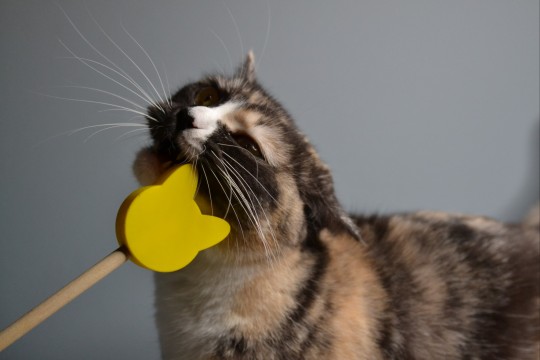

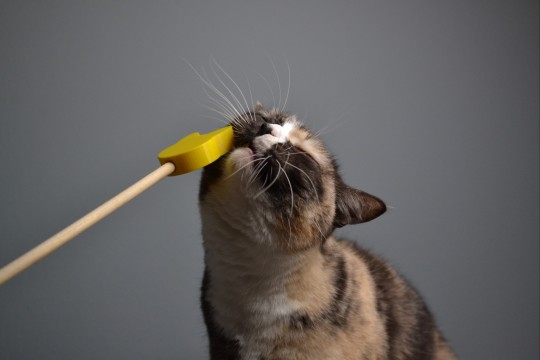


Gaia went all in on her modelling job of our new target stick 😂
She definitely approves.
They can be found here!
222 notes
·
View notes
Text
I want to follow more animal enrichment/training type blogs!! Idk how active anyone is anymore but, like this post if you see it and I'll follow you :)?
#animal training#enrichment#animal enrichment#dog training#real dog training#bird training#cat training#idk what to tag AHHHHH
33 notes
·
View notes
Note
Is it bad or abusive to teach your pet tricks?
If you were teaching tricks to some animals as an entertainment event like a professional dog show or a circus then that’d be a different thing, but just teaching tricks as an exercise with your pet isn’t exploitative in and of itself.
I’d actually encourage it, so long as it isn’t done in any way that would stress out the animal and that you stop when it’s clear they don’t want to be doing it. Done properly it promotes good behaviour, it’s good mental stimulation for your pet, it can be really fun for them and it’s a great bonding exercise.
You should know your pet enough to be able to tell if they’re enjoying something or are not in the mood. So long as the trick isn't uncomfortable or unhealthy for them to perform, and there is no force involved or punishment for failure then I don't see the harm.
32 notes
·
View notes
Text
More Rebel love. This is the third time Rebel has met Shady, a 9 months old Dutch Shepherd. Shady's owner is working hard on neutrality, it's been a lot of fun being able to work with Rebel's confidence around other dogs.
I am confident in saying that Rebel is now getting overall confident with strange dogs. Depending on their energy when they first approach, she may poof up and want a high perch. Within two minutesnsje will want down from her high perch and then within 5 minutes she will be trying to approach them or just ignoring them to explore on the ground.
I wish there were other cats I could be working around with her, but it's not like a lot of people train their cats like I do. 😅
But she may have a lot of dog friends in her life time.
164 notes
·
View notes
Text
Well everyone, I performed my first ever cetacean ultrasound today!
My “patient” is in excellent health, and this session was meant merely as practice both for me and for her—ensuring she remains comfortable holding still for scans. Because whales and dolphins are too big for manual palpation or x-rays, ultrasound is how veterinarians visualize their internal organs and ensure they remain healthy. Cetaceans in human care routinely receive ultrasound scans to monitor their health, even if they are not ill or pregnant.
And it’s a great example of cooperative care! Unlike dogs and cats, which have to be sedated or manually restrained by humans in order to get diagnostic ultrasound images, cetaceans in human care are trained to float in place while the veterinarian places the ultrasound probe on them. They are free to leave the session at any time. And there’s no need for ultrasound gel, because the water acts in its place!
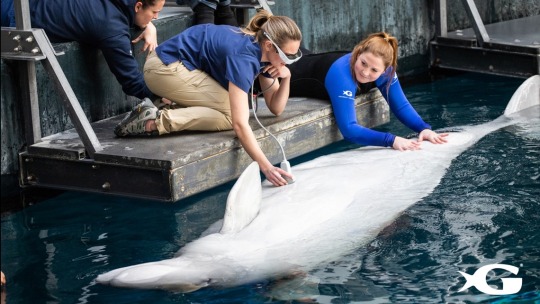
(Photo not of me… published by Georgia Aquarium when their beluga Whisper was pregnant with her calf Shila)
All in all, a great end to my externship!
#very sad to leave… but I’m heading directly to my next externship tomorrow!#another aza facility with cetaceans#my third and final externship will actually be right after I graduate because I couldn’t fit it into my clinical year#whales#dolphins#belugas#orcas#cetaceans#marine mammals#animal training#animal husbandry#vet med#zoo med#aquatic med#vet school#vet student#externships
92 notes
·
View notes
Text

Dave Salmoni 🐆🦏🐫
25 notes
·
View notes
Text
There are 3 main types of assistive animals: therapy animals, service dogs, and emotional support animals. I'm taking a look at each type and some of the similarities and differences

#spoonie#disability#chronic disability#disabilities#spoonie life#disability awareness#esa#service dog#therapy dog#emotional support animal#assistive animals#animal therapy#disability aids#dog#dog training#animal#animals#animal training#educational#public health#health education#wellness#mental health#health#disabled people#disability rights#disabled#actually disabled#disability advocacy#disability community
40 notes
·
View notes
Text
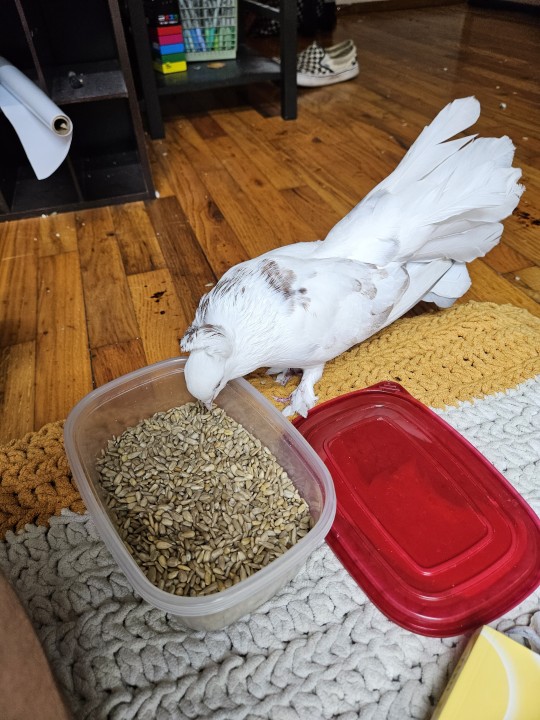
Had a big breakthrough the other day with Sophie! This is the closest she's gotten to me for treats and she wasn't being drive-y or defensive
(Ignore her disheveled tail she's molting)
#pigeon#pigeon care#fancy pigeon#pigeons#indian fantail#fantail pigeon#fantail#bird#birds#birdblr#pet bird#animal training
25 notes
·
View notes
Text
How to Get a Bird Back When it Flies Away
(This applies to corvids, parrots, and some other birds.)
I have heard people say that if your bird flies away you'll never get it back, but if you know what to do parrots and corvids are some of the easiest birds to get back.
Here are a few ideas about what to do:
Watch direction of flight so even if it flies out of sight, you know what direction to start looking in. Depending on the type of bird and how frightened it is, the bird may fly miles before landing.
If a bird is frightened, it is likely to fly in a fairly straight line away from whatever upset it.
DO NOT LEAVE YOUR BIRD even if you have waited for hours below it and it hasn't flown down to you. If night falls, and you are unable to stay with the bird, make absolutely sure you are back before dawn when the bird will wake up. The bird is very likely to fly somewhere new at dawn, or start looking for you. I can't stress this enough: you need almost unreasonable amounts of patience. It may take your bird many hours (perhaps even days) to fly down to you, but don't lose hope. (If you don't know for sure where the bird is, make sure you start looking for it again at dawn.)
Have someone else go get treats to lure the bird down, or its cage if that is available. (If the bird likes its cage, that can act as a lure.)
Things you can do to prepare for this ahead of time:
Teach your bird to come to its name.
Teach it to fly down to you. ("Stepping up" and flying upwards to you are not equivalent to flying down. Flying down takes different skills.)
Record its calls, so you can replay them for it when it flies off. If you can't see the bird or the bird can't see you, you can replay the recordings to help call it to you.
If your bird has unclipped wings, but never flies because its wings were clipped so young that it doesn't know how, either keep its wings clipped or teach it to fly. Otherwise it may spontaneously fly off your shoulder when its outside and not know how to fly back to you.
#animal training#bird advice#birds#parrots#bird help#bird owner#birdblr#parrot help#escaped bird#corvids#crows#ravens#how to#pets#animal advice
18 notes
·
View notes
Text
My friend has a cat called Kiwi who loves the outdoors, but has no recall (hasn't been trained to come when called), so whenever she manages to bum-rush the door and get outside, she gets really hyped and runs around and it takes forever to catch her.
But, when I have been visiting my friend the last few weeks, I've been demonstrating very basic clicker training/positive reinforcement for training recall, for cooperative putting-a-harness-on, and general handler attention. I've only given this kitty about four, very short training sessions (less than 5 minutes...ideal length! But really, very beginning stages). Today when a maintenance person for the apartment came in carelessly, Kiwi got out. My friend had a hysterectomy 3 weeks ago tomorrow and isn't allowed to bend at the waist for weeks yet, so I went to catch the cat.
When I went outside with the clicker and some treats and called Kiwi, she came running! My heart was so warmed! Then, since she was overaroused, she bolted past me and went and crouched by the outside of her favorite window. I clicked the clicker, and she froze. The unconscious response and attention to the click, which always heralds a treat, worked a charm. I went over, picked her and up put her inside with a treat jackpot to reinforce all of those great behaviors she exhibited: handler attention, recall, and emotional self-regulation.
Any amount of positive reinfrocement training is SO helpful. It's enrichment and helps them be happier, more interested, and engaged kitties. It helps in emergencies. It let me catch her in two mintues instead of two hours. And when we went inside and I initiated some training games, she was so interested in them, and in interacting with me and cooperatively communicating about the training game.
My heart is overflowing with happiness today. It was lovely to be reminded so clearly that any amount of training is beneficial to the animal and their human friends. Kiwi's person was delighted to see how much our tiny bit of training helped the situation. More positive reinforcement at work!
#positive reinforcement#clicker training#force free#force free training#animal training#cat training#positive reinforcement training#woodsfae
22 notes
·
View notes
Text
I have had experience with people saying "Well I couldn't do that" and "I can't afford this" and "I won't be able to do that" and "I can't move the couch" and "I can't do this" and "I can't do that" and my answer is just, very calmly, we have antecedent control or influencers and we have consequences. If we can't change behaviour with one or both of those, then we have to admit we're not going to be able to have an impact. If you're expecting your animal to change their behaviour without changing conditions, you gotta move to another planet. Or you use drugs, which is really changing the environment as well, it's changing the internal environment. But without new skills that won't work well either in the long run. So that's part of the confidence to know what we have in our toolbox, it's circumscribed, it's not infinite and endless. Creative application of those basic principles is endless and infinite, but the principles themselves are limiting in the way that gravity is limiting. If you want to wake up in the morning to your ceiling, with your feet on the ceiling, then you have to change the limits of gravity. And if you want to change behaviour through a learning solution without changing conditions, you have to figure out a way to change the limits of learning.
— Dr Susan Friedman, Animal Training Academy podcast episode 200
15 notes
·
View notes